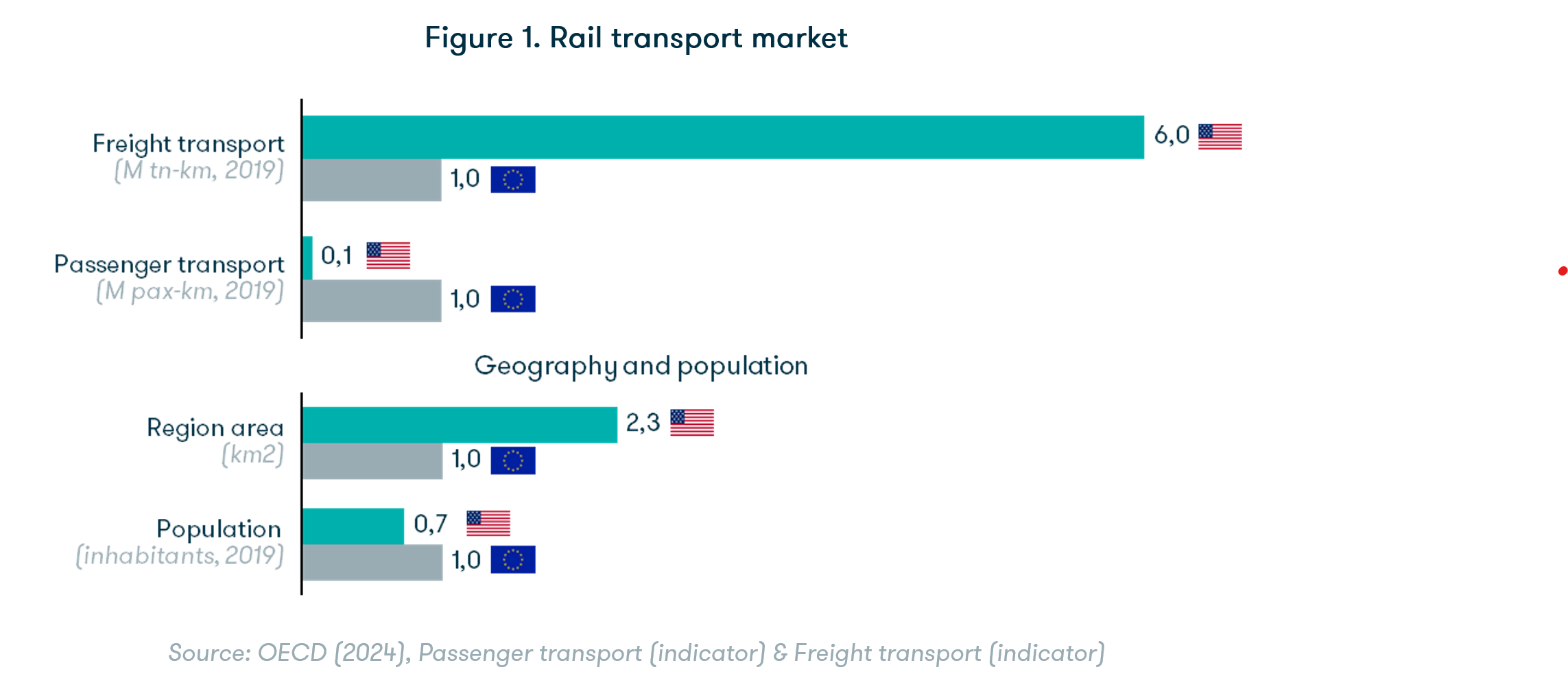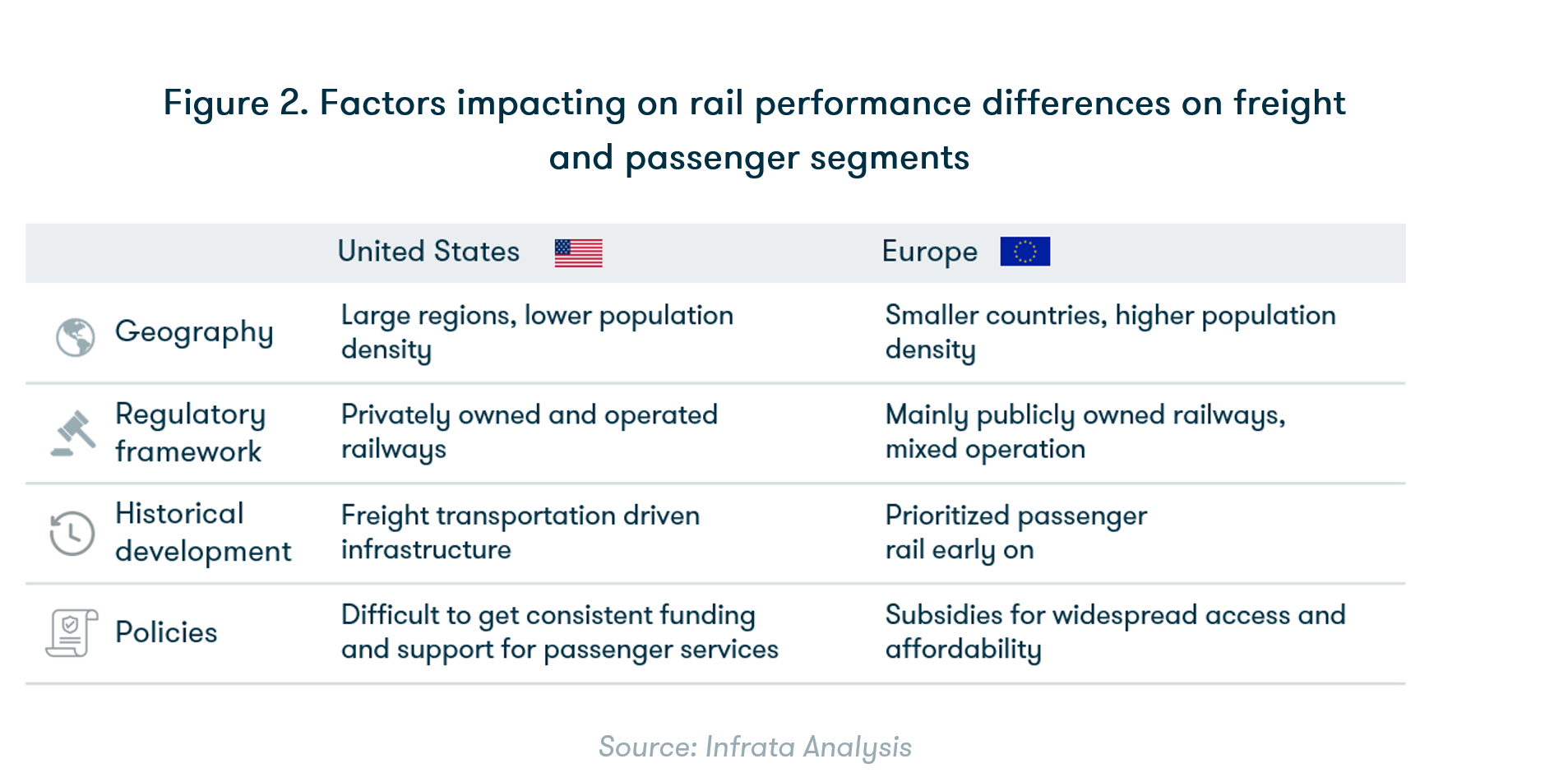US vs. EU rail market dynamics
Posted 03/06/2024

Passenger rail in the United States presents a notable contrast to its European counterpart, characterized by a robust freight rail market alongside an underdeveloped passenger rail sector. The difference derives from a combination of geographical, regulatory, historical, and policy factors, amongst others.

Geographically, whereas Europe's relatively compact geography and denser populations has facilitated and supported the development of passenger rail, the US, with its large territory and low densities, faces hurdles in establishing efficient and economically viable rail networks for passengers.
Conversely, the long distances in the US favour the freight industry, with rail transport excelling in covering long distances with substantial cargo volumes. This stands in contrast to Europe, where trucking is more prevalent due to the flexibility required for widespread distribution.
Historical infrastructure priorities have also shaped the current landscape of passenger rail in both regions. In the US, a historical emphasis on freight transportation has led to a disparity in investment and development compared to Europe, which prioritized passenger rail early on.
Additionally, regulatory frameworks differ significantly between the US and Europe. The predominantly private ownership and operation of railways in the US foster a competitive environment, contrasting with Europe's predominantly publicly owned railways and mixed public-private operations.

Despite these challenges and differences, the passenger rail sector in the United States holds wide potential for growth. Initiatives such as high-speed rail projects like the recent Brightline, transit-oriented developments (TOD) integrating transportation infrastructure with urban planning, public-private partnerships, and environmental sustainability efforts offer promising avenues for strengthening the future of passenger rail transportation in the US.